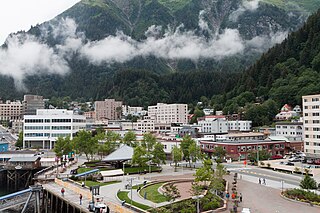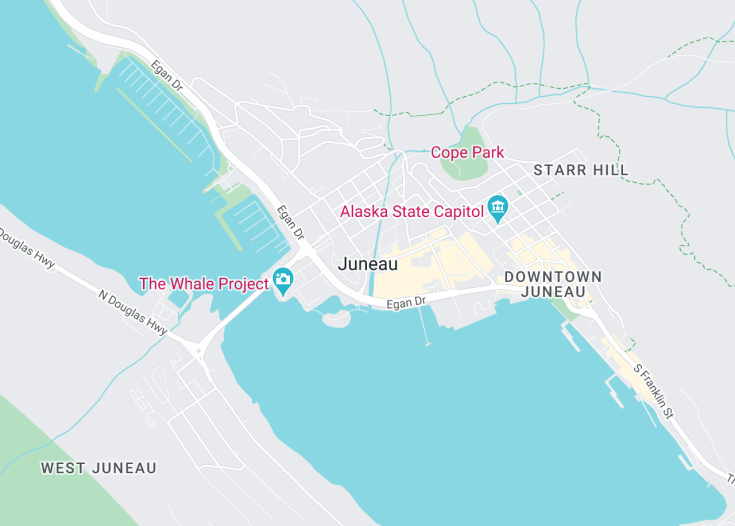Juneau, Alaska’s picturesque capital, nestled between the Gastineau Channel and the Coast Mountains, offers visitors a unique fusion of stunning natural landscapes and rich cultural history. Known for its breathtaking scenery, Juneau is accessible only by sea or air, adding to its mystique and exclusivity. The city serves as a gateway to incredible outdoor adventures, including glacier tours, whale watching, and world-class hiking. Moreover, its vibrant local arts scene and historical sites, including the well-preserved 19th-century buildings downtown, make Juneau a multifaceted destination for any traveler.
When visiting Juneau, always prepare for changeable weather. Pack layers and waterproof gear to comfortably explore the great outdoors, regardless of rain or shine.
Consider booking a whale watching tour during your stay; Juneau’s waters are among the best in the world for sighting humpback and orca whales in their natural habitat.
Top things to do & see in Juneau
Select the following sights and activities to discover best tickets and tours available in Juneau.
Juneau: The Gateway to Glaciers
| Country | Alaska (USA) |
| Time in Juneau | Current GMT Time: 2:00 PM |
| Language spoken | English |
| Population | 32,255 (2020 U.S. Census) |
| Currency | United States Dollar (USD $) |
| Airports |
|
As the capital city of Alaska, Juneau stands unique, accessible only by sea and air with no roads connecting it to the rest of the state. Surrounded by water and expansive ice fields, Juneau provides a fascinating merger of vibrant city life and the rugged wilderness of Alaska. From its historical significance dating back to its origins in the gold mining era to becoming the governmental heart of Alaska, Juneau tells a story unlike any other U.S. capital. The city’s picturesque landscape is dominated by the impressive Mendenhall Glacier, a vast and still-active glacier that is a highlight for visitors and researchers alike. Beyond its natural beauty, Juneau has a rich cultural scene with an array of museums, local theaters, and arts evident in numerous galleries and public spaces, echoing Alaska’s unique heritage and the indigenous Tlingit culture. The city also serves as a starting point for numerous outdoor adventures, including glacier trekking, kayaking, and whale watching, making it a premier destination for eco-tourists and adventure seekers. Despite its remote location, Juneau offers all modern conveniences alongside exceptional natural experiences, making it a paradoxically modern yet wild destination. Its economy thrives on tourism, fisheries, and government activities, which all harmonize with the local efforts to preserve the environment and promote sustainability.
Where is Juneau?
Juneau, located in the southeastern region of Alaska, sits on the Gastineau Channel with the Coast Mountains to the east.
Distances:
| Route | Distance by plane | Time by plane |
| Anchorage to Juneau | 569 miles (916 km) | 1.5 hours |
| Fairbanks to Juneau | 630 miles (1014 km) | 1.5 hours |
What is Juneau famous for?
Juneau is renowned for its stunning natural landscapes including Mendenhall Glacier, abundant wildlife, and its unique status as an inaccessible state capital. Its rich cultural heritage celebrates both American and native Tlingit roots.
History
Pre-1900: Early Inhabitants and European Contact
Juneau, the capital of Alaska, has a rich history that dates back thousands of years when the area was inhabited by the Tlingit people. These indigenous peoples have lived in the area for over a thousand years and have a deeply rooted culture tied to the region. The Tlingit named the area ‘Dzántik’i Héeni’, meaning ‘where the flounder’s (flatfish) are’. The first European to sight the area was Joseph Whidbey master of the HMS Discovery during George Vancouver’s expedition in 1794, although the Tlingit people were the main inhabitants until the late 19th century.
1900-1959: The Founding of Juneau and Gold Rush
Juneau’s modern development began in the 1880s with the discovery of gold by Joe Juneau and Richard Harris. This discovery led to a gold rush, which significantly boosted the population and development of the city. Due to its gold deposits, Juneau quickly became a mining hub. In 1906, it was chosen as the territorial capital of Alaska, establishing its political significance long before Alaska became a state in 1959.
1960-Present: State Capital and Modern Era
Since Alaska achieved statehood, Juneau has developed into a modern city while retaining its historical charm and significance. It is not only the state capital but also a key cultural and economic center in the region. Despite the depletion of its initial gold deposits, Juneau has remained vibrant through its diverse economy based on government, tourism, fishing, and other industries. Present-day Juneau is also noted for its efforts in preserving its rich cultural heritage and natural environment which continue to attract visitors and residents alike.
Visit Juneau
Top Attractions in Juneau
Juneau, Alaska, beckons with a variety of attractions that cater to both adventure seekers and those looking to soak in natural beauty and history. Here are some must-visit spots:
- Mendenhall Glacier: This stunning 13-mile-long glacier is accessible via various hiking trails that offer different viewpoints.
- Alaska State Museum: Gain insights into Alaska’s history, native cultures, and art.
- Juneau Downtown Historic District: Explore the charming streets lined with historic buildings, shops, and eateries.
- Tracy Arm Fjord: A scenic destination with dramatic cliffs, waterfalls, and wildlife including seals and bald eagles.
- Mount Roberts Tramway: For panoramic views of the city, the ocean, and the surrounding mountains, take a ride up this tramway.
Festivals and Events in Juneau
Juneau’s calendar features a variety of cultural and outdoor events offering a glimpse into the local lifestyle:
- Gold Rush Days (June): A celebration of Juneau’s mining history with mining competitions and family activities.
- Juneau Jazz & Classics Festival (May): A spring-time festival featuring jazz, blues, and classical music performances across various venues in the city.
- Alaska Folk Festival (April): A week-long musical gathering with workshops, concerts, and dances.
Best Time to Visit Juneau
The best time to visit Juneau is from May through September when the weather is mildest and the days are longest. This period offers the optimal conditions for hiking, wildlife viewing, and enjoying the natural attractions. Additionally, many of the local festivals and events take place during these months, making it a lively visiting experience.
Is Juneau Worth Visiting?
Juneau is indeed worth visiting for its unique combination of picturesque landscapes, rich history, and vibrant cultural scene. Its natural environment offers countless opportunities for adventure and photography, from the awe-inspiring Mendenhall Glacier to the abundant wildlife. The city’s history as a gold rush town adds a layer of fascination, complemented by its ongoing cultural events. Whether you are seeking solitude in nature or the warmth of community festivals, Juneau provides an enriching and memorable experience.










